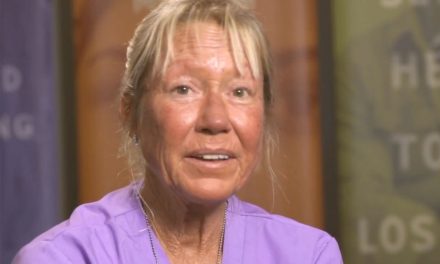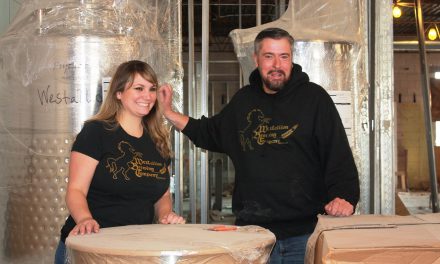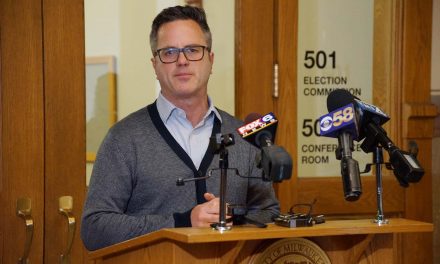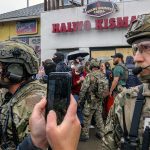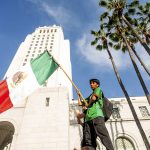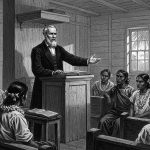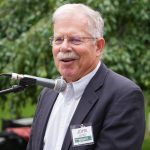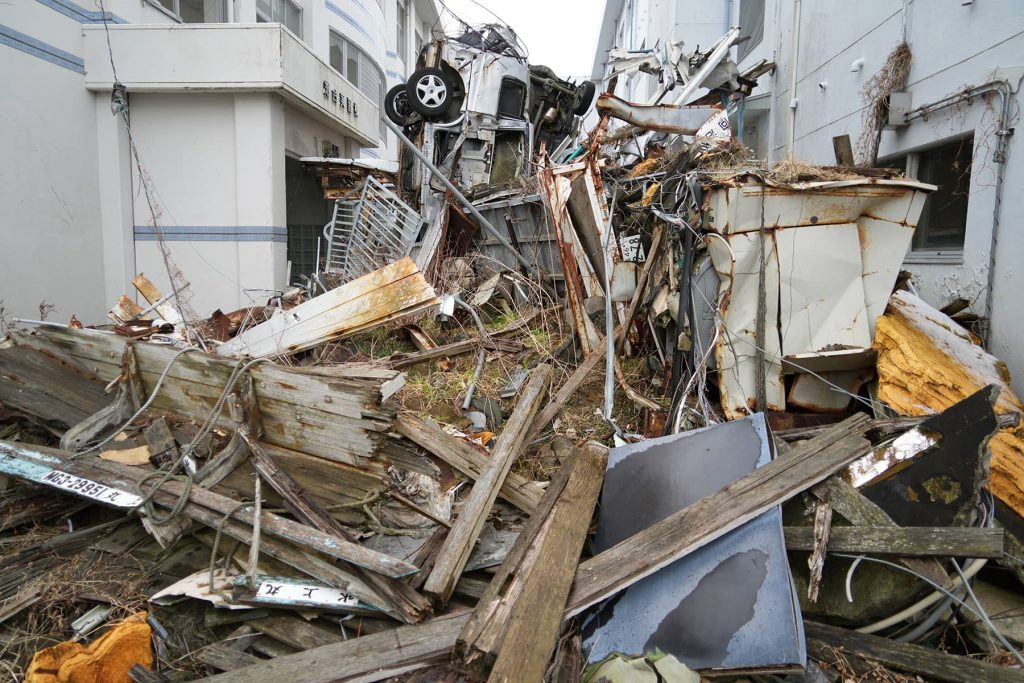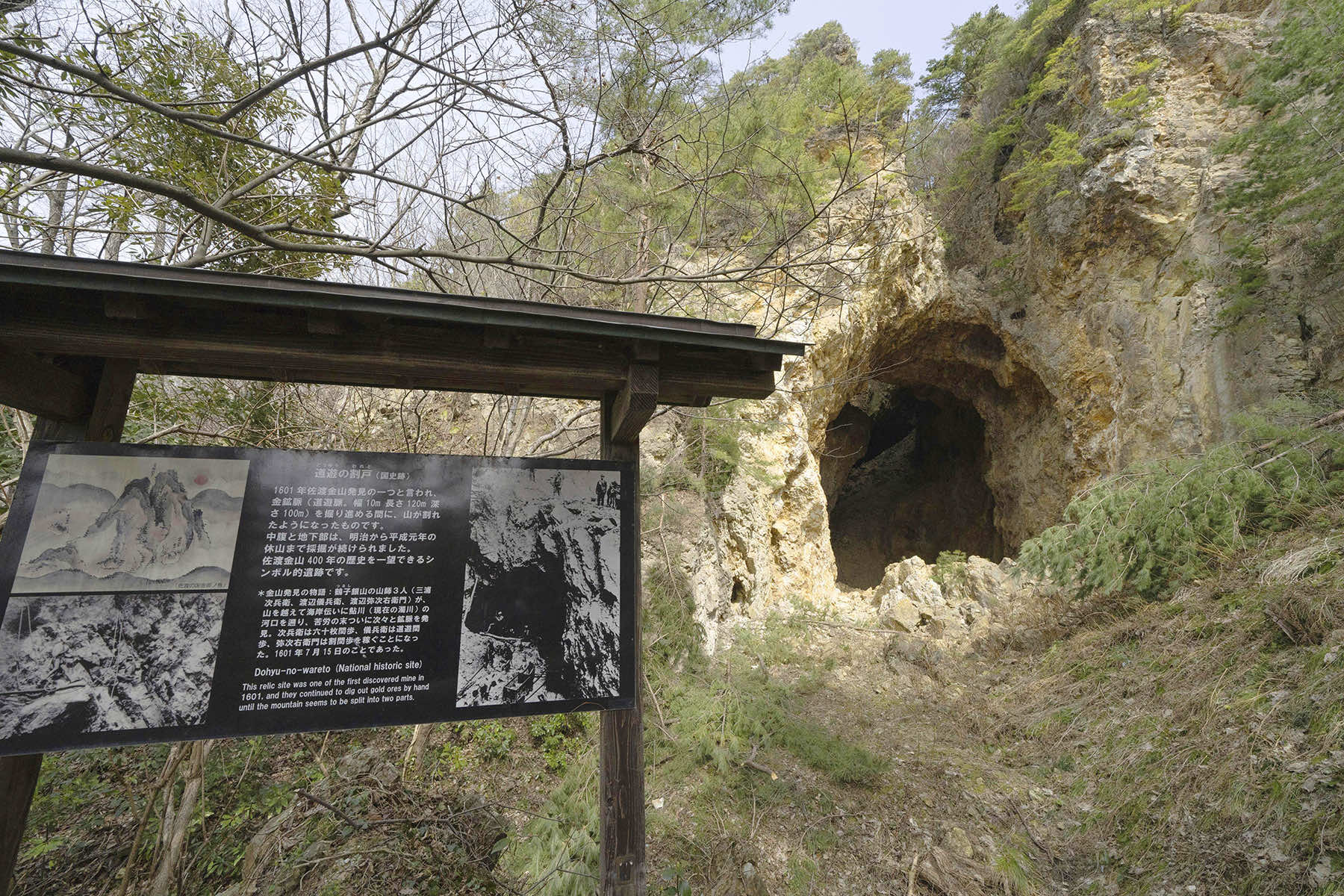
The UNESCO World Heritage Committee decided in September to register Japan’s controversial Sado gold mine as a cultural heritage site, after the country agreed to include it in an exhibit of its dark history of abusing Korean laborers during World War II.
The decision signaled an improvement in ties between Tokyo and Seoul.
The mine on an island off the coast of Niigata in northern Japan operated for nearly 400 years and was once the world’s largest gold producer before closing in 1989. It was also linked to Japan’s wartime abuse of Korean laborers.
Committee members, including South Korea, gave unanimous support to the listing at the annual meeting in New Delhi, India. They said Japan provided additional information, made all necessary amendments to the plan, and consulted with South Korea over the mine’s wartime history.
The Japanese delegate told the meeting that Japan has installed new exhibition material “to explain the severe conditions of Korean laborers’ work and remember their hardship.”
Japan acknowledged that thousands of Koreans were sent to the mine shaft under harsh conditions. They were subjected to dangerous tasks involving long hours, brutal working environments, nearly no days off, inadequate food rations, and severe mistreatment, which caused some to die. Many workers suffered from malnutrition, disease, and accidents, with little to no regard for their well-being.
A memorial service for all the workers at the Sado Island gold mines will be held annually at the site, Japanese officials said.
The South Korean delegation said the country expected Japan to keep its pledge to be truthful to history and to show “both the bright and dark side” of the Sado mine in order to help improve relations over the long term.
Japan had to demonstrate a commitment to face its wartime atrocities in order to gain support from South Korea, which had opposed the UNESCO bid because of the wartime abuse of Korean laborers.
Such disputes over history have consistently strained bilateral ties. Seoul has said some Koreans brought to Japan during its 1910-1945 colonization of the Korean Peninsula were put to forced labor at the mine.
Historians say Japan used hundreds of thousands of Korean laborers, including those forcibly brought from the Korean Peninsula, at Japanese mines and factories to make up for labor shortages, as most working-age men were sent to battlefronts across Asia and the Pacific. Sado was among them.
Japan’s government has long been criticized for its reluctance to discuss wartime atrocities, including the sexual abuse of Asian women known as “comfort women” and Korean forced laborers.
Japanese authorities have hailed the Sado Island mine for advancements in mining technology before and after industrialization but made no mention of its connection to the abuse of Korean laborers during WWII.
Japan initially hoped to get the Sado Island mine listed as a World Heritage site last year but filed documents that were deemed insufficient and needed more information.
The International Council on Monuments and Sites, which advises the UNESCO committee, in June called on Japan to give a fuller account of the Sado mines. However, the requested information pertained to technical details, unrelated to opposing views regarding the mines’ wartime history.
Another controversial Japanese site was granted UNESCO recognition in 2015. Gunkanjima, or Battleship Island, in Nagasaki prefecture, was a former coal mine site recognized as important to the Meiji Industrial Revolution in Japan. The island became a symbol of the suffering endured by Koreans under Japanese colonial rule.
South Korea protested that the site omitted mention of Koreans toiling on the island, which triggered a UNESCO decision urging Japan to present a more balanced history.
Over the years, Korean forced laborers and their descendants have pursued legal action against the Japanese government and companies that benefited from forced labor during the colonial period.
The lawsuits have sought compensation and official apologies. In some cases, South Korean courts have ruled in favor of the plaintiffs, ordering Japanese companies to pay damages. However, Japan has typically rejected these rulings, arguing that all claims were settled under the 1965 Treaty on Basic Relations between Japan and South Korea, which normalized diplomatic relations and included financial settlements.
MI Staff (Korea), with Mari Yamaguchi
Kyodo News (via AP), and Rujin, Khun Ta, Unterwegs, Pele Bong, Takashi Images (via Shutterstock)
- Exploring Korea: Stories from Milwaukee to the DMZ and across a divided peninsula
- A pawn of history: How the Great Power struggle to control Korea set the stage for its civil war
- Names for Korea: The evolution of English words used for its identity from Gojoseon to Daehan Minguk
- SeonJoo So Oh: Living her dream of creating a "folded paper" bridge between Milwaukee and Korean culture
- A Cultural Bridge: Why Milwaukee needs to invest in a Museum that celebrates Korean art and history
- Korean diplomat joins Milwaukee's Korean American community in celebration of 79th Liberation Day
- John T. Chisholm: Standing guard along the volatile Korean DMZ at the end of the Cold War
- Most Dangerous Game: The golf course where U.S. soldiers play surrounded by North Korean snipers
- Triumph and Tragedy: How the 1988 Seoul Olympics became a battleground for Cold War politics
- Dan Odya: The challenges of serving at the Korean Demilitarized Zone during the Vietnam War
- The Korean Demilitarized Zone: A border between peace and war that also cuts across hearts and history
- The Korean DMZ Conflict: A forgotten "Second Chapter" of America's "Forgotten War"
- Dick Cavalco: A life shaped by service but also silence for 65 years about the Korean War
- Overshadowed by conflict: Why the Korean War still struggles for recognition and remembrance
- Wisconsin's Korean War Memorial stands as a timeless tribute to a generation of "forgotten" veterans
- Glenn Dohrmann: The extraordinary journey from an orphaned farm boy to a highly decorated hero
- The fight for Hill 266: Glenn Dohrmann recalls one of the Korean War's most fierce battles
- Frozen in time: Rare photos from a side of the Korean War that most families in Milwaukee never saw
- Jessica Boling: The emotional journey from an American adoption to reclaiming her Korean identity
- A deportation story: When South Korea was forced to confront its adoption industry's history of abuse
- South Korea faces severe population decline amid growing burdens on marriage and parenthood
- Emma Daisy Gertel: Why finding comfort with the "in-between space" as a Korean adoptee is a superpower
- The Soul of Seoul: A photographic look at the dynamic streets and urban layers of a megacity
- The Creation of Hangul: A linguistic masterpiece designed by King Sejong to increase Korean literacy
- Rick Wood: Veteran Milwaukee photojournalist reflects on his rare trip to reclusive North Korea
- Dynastic Rule: Personality cult of Kim Jong Un expands as North Koreans wear his pins to show total loyalty
- South Korea formalizes nuclear deterrent strategy with U.S. as North Korea aims to boost atomic arsenal
- Tea with Jin: A rare conversation with a North Korean defector living a happier life in Seoul
- Journalism and Statecraft: Why it is complicated for foreign press to interview a North Korean defector
- Inside North Korea’s Isolation: A decade of images show rare views of life around Pyongyang
- Karyn Althoff Roelke: How Honor Flights remind Korean War veterans that they are not forgotten
- Letters from North Korea: How Milwaukee County Historical Society preserves stories from war veterans
- A Cold War Secret: Graves discovered of Russian pilots who flew MiG jets for North Korea during Korean War
- Heechang Kang: How a Korean American pastor balances tradition and integration at church
- Faith and Heritage: A Pew Research Center's perspective on Korean American Christians in Milwaukee
- Landmark legal verdict by South Korea's top court opens the door to some rights for same-sex couples
- Kenny Yoo: How the adversities of dyslexia and the war in Afghanistan fueled his success as a photojournalist
- Walking between two worlds: The complex dynamics of code-switching among Korean Americans
- A look back at Kamala Harris in South Korea as U.S. looks ahead to more provocations by North Korea
- Jason S. Yi: Feeling at peace with the duality of being both an American and a Korean in Milwaukee
- The Zainichi experience: Second season of “Pachinko” examines the hardships of ethnic Koreans in Japan
- Shadows of History: South Korea's lingering struggle for justice over "Comfort Women"
- Christopher Michael Doll: An unexpected life in South Korea and its cross-cultural intersections
- Korea in 1895: How UW-Milwaukee's AGSL protects the historic treasures of Kim Jeong-ho and George C. Foulk
- "Ink. Brush. Paper." Exhibit: Korean Sumukhwa art highlights women’s empowerment in Milwaukee
- Christopher Wing: The cultural bonds between Milwaukee and Changwon built by brewing beer
- Halloween Crowd Crush: A solemn remembrance of the Itaewon tragedy after two years of mourning
- Forgotten Victims: How panic and paranoia led to a massacre of refugees at the No Gun Ri Bridge
- Kyoung Ae Cho: How embracing Korean heritage and uniting cultures started with her own name
- Complexities of Identity: When being from North Korea does not mean being North Korean
- A fragile peace: Tensions simmer at DMZ as North Korean soldiers cross into the South multiple times
- Byung-Il Choi: A lifelong dedication to medicine began with the kindness of U.S. soldiers to a child of war
- Restoring Harmony: South Korea's long search to reclaim its identity from Japanese occupation
- Sado gold mine gains UNESCO status after Tokyo pledges to exhibit WWII trauma of Korean laborers
- The Heartbeat of K-Pop: How Tina Melk's passion for Korean music inspired a utopia for others to share
- K-pop Revolution: The Korean cultural phenomenon that captivated a growing audience in Milwaukee
- Artifacts from BTS and LE SSERAFIM featured at Grammy Museum exhibit put K-pop fashion in the spotlight
- Hyunjoo Han: The unconventional path from a Korean village to Milwaukee’s multicultural landscape
- The Battle of Restraint: How nuclear weapons almost redefined warfare on the Korean peninsula
- Rejection of peace: Why North Korea's increasing hostility to the South was inevitable
- WonWoo Chung: Navigating life, faith, and identity between cultures in Milwaukee and Seoul
- Korean Landmarks: A visual tour of heritage sites from the Silla and Joseon Dynasties
- South Korea’s Digital Nomad Visa offers a global gateway for Milwaukee’s young professionals
- Forgotten Gando: Why the autonomous Korean territory within China remains a footnote in history
- A game of maps: How China prepared to steal Korean history to prevent reunification
- From Taiwan to Korea: When Mao Zedong shifted China’s priority amid Soviet and American pressures
- Hoyoon Min: Putting his future on hold in Milwaukee to serve in his homeland's military
- A long journey home: Robert P. Raess laid to rest in Wisconsin after being MIA in Korean War for 70 years
- Existential threats: A cost of living in Seoul comes with being in range of North Korea's artillery
- Jinseon Kim: A Seoulite's creative adventure recording the city’s legacy and allure through art
- A subway journey: Exploring Euljiro in illustrations and by foot on Line 2 with artist Jinseon Kim
- Seoul Searching: Revisiting the first film to explore the experiences of Korean adoptees and diaspora


















